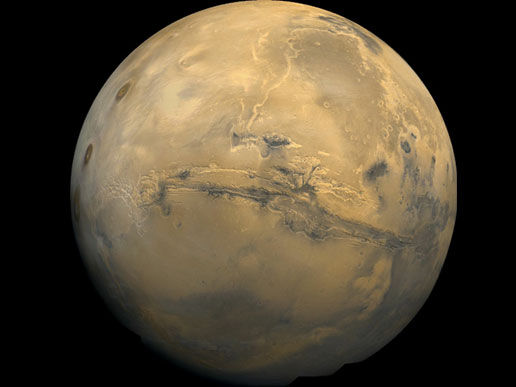Perseverance successfully lands and videotapes Mars

This is a picture of Mars, where Perseverance recently landed.
February 25, 2021
Perseverance, the newest rover from NASA, has landed safely in Jezero Crater on Mars and has opened the door for an in-depth biological analysis of the Red Planet.
On Feb. 18, Perseverance completed an approximately 470 million kilometer journey to Mars. Even going at a speed of 79,000 kilometers per hour, it still took Perseverance eight months to land.
According to the Natural History Museum website, the landing process for mars rovers is always a challenge, with more than two-thirds of missions sent to Mars failing their descent into the planet’s atmosphere.
The NASA website refers to this challenge as “seven minutes of terror.” These seven minutes are critical to landing because it’s when the rover enters the atmosphere, descends and lands (EDL). The problem is communication from Earth to the rover on Mars takes time, so engineers cannot guide the rover during this part of the mission.
The Republic World explains this terrifying time, saying, “the rover will have to perform a landing itself, with no human guidance involved. The experts wouldn’t be sure if Perseverance had safely landed during that period.”
Perseverance was able to land safely as planned, much to the relief of the engineers working on the project.
Michael Watkins, director of NASA’s Jet Propulsion Laboratory in southern California, was especially impressed by Perseverance’s landing, which was caught on video for the first time.
“Now we finally have a front-row view to what we call ‘the seven minutes of terror’ while landing on Mars,” he said. “From the explosive opening of the parachute to the landing rocket’s plume sending dust and debris flying at touchdown, it’s absolutely awe-inspiring.”
According to the NASA website, Perseverance is based on the Mars Science Labroatory’s Curiosity rover, and is about 10 feet long, 9 feet wide and 7 feet tall.
Similar to a human, Perseverance has several “body” parts that make it possible for it to continue running on Mars. The rover is equipped with computers, cameras, microphones, antennas, temperature controls and an arm to reach out and collect rock samples for study.
The camera, specifically the EDL camera, allowed the general public to watch Perseverance on Mars.
Matt Wallace, the Mars 2020 Perseverance deputy project manager, emphasizes the importance of this new look at Mars.
“I’ve been waiting 25 years for the opportunity to see a spacecraft land on Mars,” he said. “It was worth the wait. Being able to share this with the world is a great moment for our team.”
The EDL camera, a new addition to the rover blueprint, has given “some of the most iconic visuals in space exploration history,” according to NASA.
Jake Simon, an Iowa State assistant professor of physics and astronomy, agrees with NASA’s statement.
“Perseverance is giving us some of the highest resolution images of another planet that we have seen to date,” Simon said.
Since it was discovered that Mars used to be covered in water, scientists have been very interested in finding out more about whether there was life on Mars.
According to the NASA website, “A key objective of Perseverance’s mission on Mars is astrobiology, including the search for signs of ancient microbial life. The rover will characterize the planet’s geology and past climate, pave the way for human exploration of the Red Planet and be the first mission to collect and cache Martian rock and regolith.”
Simon explains why this is so important.
“[Searching for life] is a major step toward answering the question, ‘Can life form on planets besides our own?’” he said. “If the answer to that question is yes, that suggests that life might even be common in the Universe, at least in a simple form.”
Perseverance’s rock samples from Mars won’t reach Earth until 2031, but the composition could tell scientists a lot about how planets form.
“To explore space is to explore objects and concepts beyond our wildest and weirdest dreams,” Simon said.
Steve Jurczyk, the acting NASA administrator, said Perseverance still has a lot to give to the scientific community.
“Perseverance is just getting started,” he said. “It reinforces the remarkable level of engineering and precision that is required to build and fly a vehicle to the Red Planet.”
















